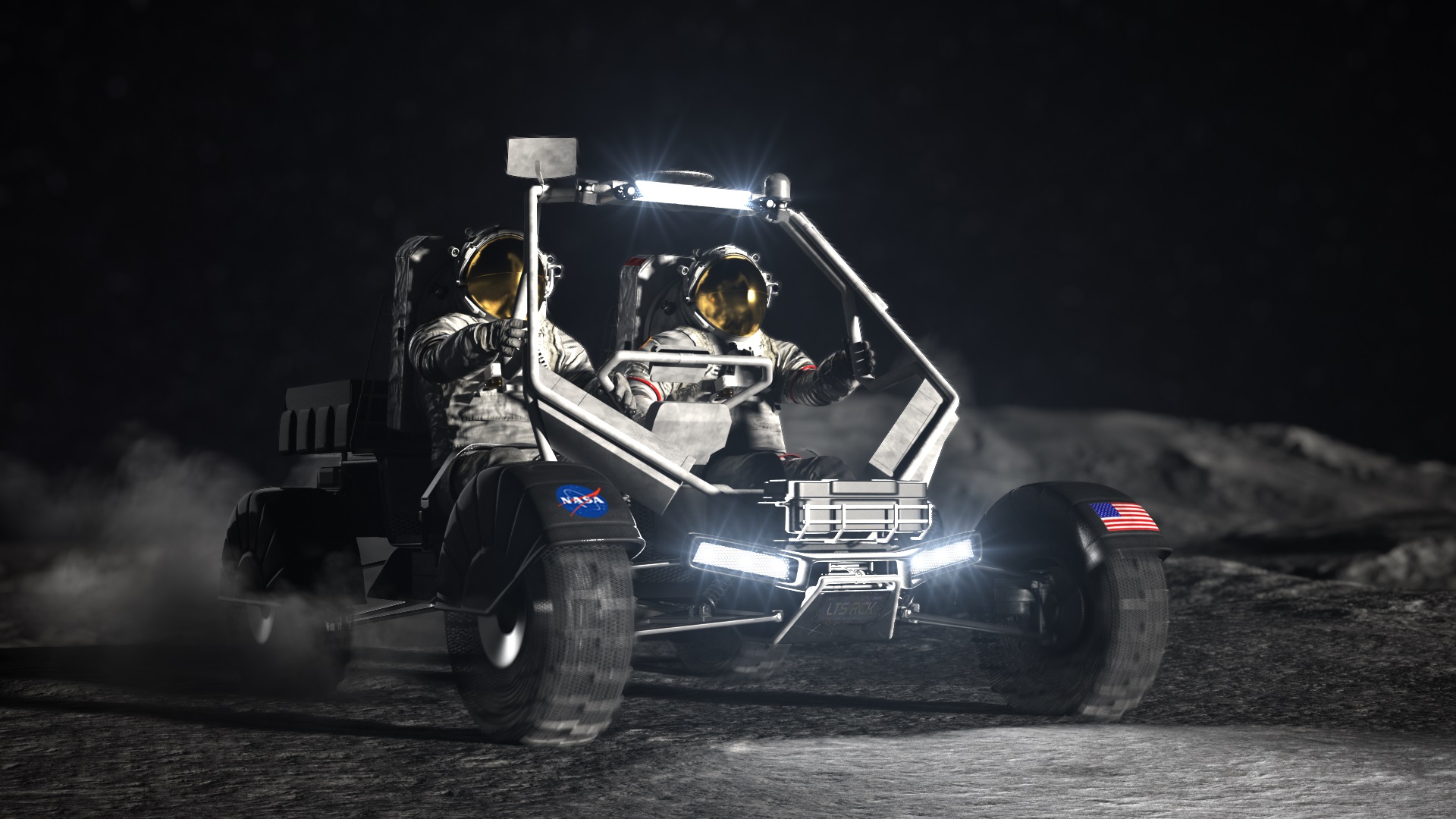Some of the biggest names in aerospace — and the automotive industry — will play roles in putting NASA astronauts in the driver’s seat for roving around on the moon.
The space agency today selected three teams to develop the capabilities for a lunar terrain vehicle, or LTV, which astronauts could use during Artemis missions to the moon starting with Artemis 5. That mission is currently scheduled for 2029, three years after the projected date for Artemis’ first crewed lunar landing.
The teams’ leading companies may not yet be household names outside the space community: Intuitive Machines, Lunar Outpost and Venturi Astrolab. But each of those ventures has more established companies as their teammates.
Over the next 15 years, the three teams will be eligible to work on task orders amounting to a potential total value of $4.6 billion — with the aim of providing mobility technology for crewed and uncrewed moon rovers. The marquee vehicle would be a rover capable of carrying Artemis astronauts on journeys of exploration around the lunar surface, as well as taking robotic trips on its own.
“We look forward to the development of the Artemis generation lunar exploration vehicle to help us advance what we learn at the moon,” Vanessa Wyche, director of NASA’s Johnson Space Center in Houston, said today in a news release. “This vehicle will greatly increase our astronauts’ ability to explore and conduct science on the lunar surface while also serving as a science platform between crewed missions.”
In a posting to X / Twitter, NASA Administrator Bill Nelson said the LTV rover is “essential to the success of Artemis.”
After the teams conduct year-long feasibility studies, NASA plans to select one of the teams to go ahead with construction and testing of its LTV, leading up to a lunar demonstration mission in advance of Artemis 5. NASA could give the teams additional task orders to fill its needs for unpressurized rover capabilities on the moon through 2039.
Texas-based Intuitive Machines is best-known for putting a robotic lander on the lunar surface in February. A couple of its teammates — Boeing and Northrop Grumman — have moon-mission experience that goes back to the Apollo era. Michelin (the tire company) and AVL (which provides vehicle testing and simulation services) round out the Moon RACER team.
Colorado-based Lunar Outpost has already booked three rover missions for delivery to the moon by SpaceX and Intuitive Machines. Its teammates on the Lunar Dawn project include Lockheed Martin, General Motors, Goodyear Tire & Rubber and MDA Space (known for building the robotic arms on NASA’s space shuttles and the International Space Station).
California-based Astrolab made a separate deal last year with SpaceX to have its FLEX rover delivered to the moon aboard a Starship lander for a commercial mission that’s set for as soon as 2026. Astrolab’s teammates on the FLEX LTV project include Axiom Space (which is making spacesuits for Artemis moon missions) and Odyssey Space Research.
NASA said the LTV would support the Artemis program’s crewed missions to the moon’s south polar region, plus remote-controlled exploration activities as needed between those missions. “Outside those times, the provider will have the ability to use their LTV for commercial lunar surface activities unrelated to NASA missions,” the space agency said.
With regard to the financial arrangements, NASA said only that the Lunar Terrain Vehicle Services contract had a combined maximum potential value of $4.6 billion for all task-order awards. But a couple of the teams provided additional details. Intuitive Machines said it was awarded $30 million as a prime contractor to complete the initial feasibility study for Moon RACER. And Astrolab said its LTV contract could be worth up to $1.9 billion, depending on NASA’s needs.

